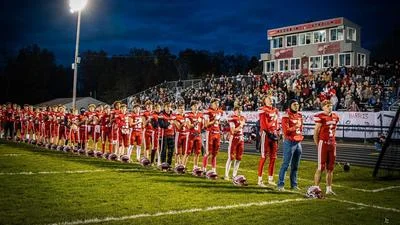Let’s talk The Masters.
This is a great time of the year for sports. Major League Baseball is just about to start; March Madness (NCAA basketball) is in its final weekend; NFL trades and signings are in full swing; the NBA and NHL are winding down to playoff time and the NBA championships and the Stanley Cup; and “sports spectacular” season is upon us. Some sporting events even the casual fan or non-fan takes interest in. These events include: NASCAR – the crown jewel Daytona 500 was run in February, but the Geico 500 (formerly the Winston 500) is at Talladega on April 24; thoroughbred horse racing – the Kentucky Derby, May 7; Indy car racing – Indianapolis 500, May 29; tennis – the French Open, June 5 (with Wimbledon starting June 27); cycling – Tour de France, July 1-24; and arguably the premier professional golf event of the year, the Masters, April 7-10.
Now, the Masters is one of these sports spectacular events that even non-fans often take an interest in. Of course, there are golf fans, golf enthusiasts, golfers and casual sports fans. Some golfers just like to play golf and not watch others play the game. Some golfers live for the sport and play it, watch it, read about it, practice it, buy the gear and memorabilia and talk about it at every opportunity. Some find watching it on TV boring and some take the excitement, the history, the skill levels, the clutch shots and the heartbreaking flubs as MUST-SEE TV or be-there-in-person pilgrimages. Some couldn’t care less and some don’t care UNTIL the big event is on, and then watch it like a true fan, a once-a-year fan, but a fan, nonetheless.
Back to the Masters. Golf originated in Scotland in the 15th century and was enjoyed so much that the nation neglected its military training and strategy, which left it vulnerable to English attacks. As a result, King James II and his parliament banned the sport in 1457. Apparently, the Scots paid no heed to the edict and King James IV welcomed the pastime back in 1502, so that he could play as well. Golf primarily stayed in Scotland until 1766, when the Royal Blackheath Club was established in London, and it took 54 more years for a club to be formed outside Britain – India got there first, in 1820. The United States Golf Association took hold in 1894 and golf became a “thing” in America.
Ok … The Masters …the Green Jackets. On March 22, 1934, the first U.S. Masters was played in at Augusta National Golf Club in Augusta, Ga. Amateur champion Bobby Jones and investor-banker Clifford Roberts founded the event. It has become the first major, grand-slam event of each year. The Green Jacket that goes to the winner started in 1949 (Sam Snead won it), and the winner has to return the jacket to the golf club, a year after his win. It is his property, but it is stored in a special cloakroom with other winners’ jackets. It stays at the clubhouse. The legends have won it and worn the jacket. Sarazen, Nelson, Demarit, Snead, Hogan, Palmer, Player, Nicklaus, Casper, Woods, Mickelson and so many top names in golf history have worn the Green Jacket.
The Masters is not without controversy. For one thing, black members were not allowed in Augusta National Golf Club until 1990 (Ron Townsend was admitted) and no women were allowed until 2021, when Condoleeza Rice and Darla Moore were admitted. Lee Elder became the first African American to play in the Masters – in 1975.
Other controversy includes the 1968 Masters, when Roberto DeVicenzo signed a scorecard that had him making a par four on the 17th hole, when he really shot a birdie three. According to the rules … he gets the four, and he lost the tournament by one shot – that non-shot – to Bob Goalby.
Big moments include in 1961, when Arnold Palmer charged from seven shots back in the final round to take the lead, only to lose on the 18th hole to Gary Player. In 1984, Ben Crenshaw begged for a 60-foot putt to drop on No. 10 … and it did. He won that year. Tom Weiskopf shot a 13 on the par-3 12th after putting five shots in a row into the water – Rae’s Creek. In 2013, Tiger Woods took a ball out of the water and dropped it on the 15th hole and made a bogey … and he was penalized to triple bogey when it was ruled that the drop was not close enough to the original shot. Gene Sarazen made a double eagle-2 on the last hole to erase a three-shot deficit, and he went on to win in a playoff.
The Masters. Gary Player said, “If there’s a golf course in heaven, I hope it’s like Augusta. I just don’t want an early tee time.”
Hey, with all of that in its history … it’s worth viewing … don’t ya think? Fore.
Do you watch the Masters or other spectacles? Let me know at mike.blake@mountvernonnews.com.
See you next time.







